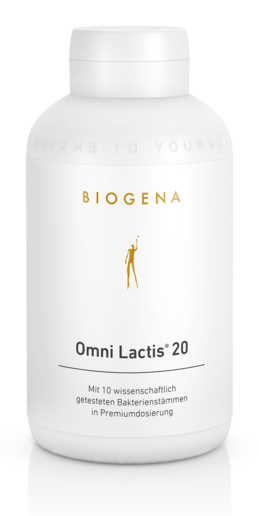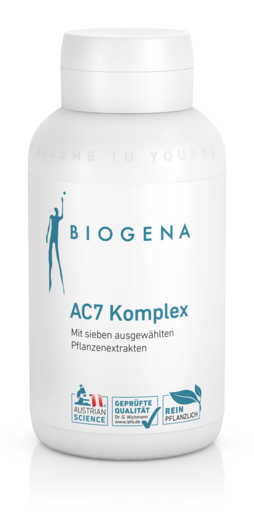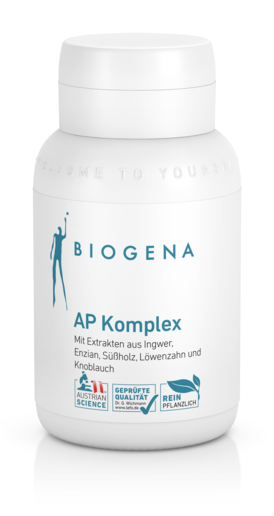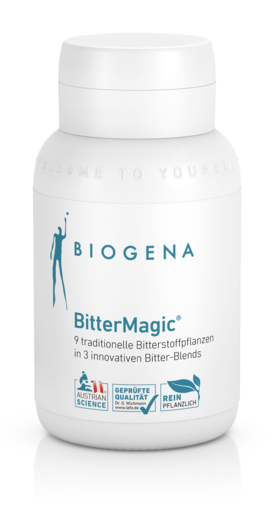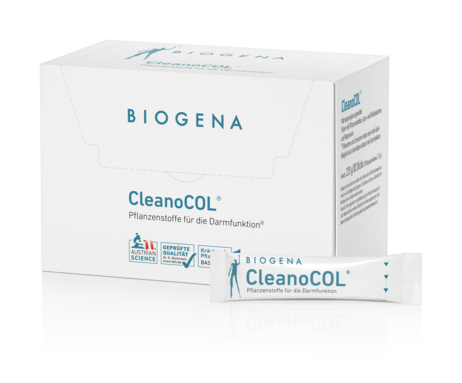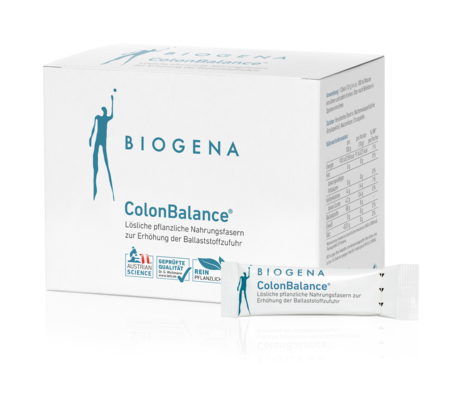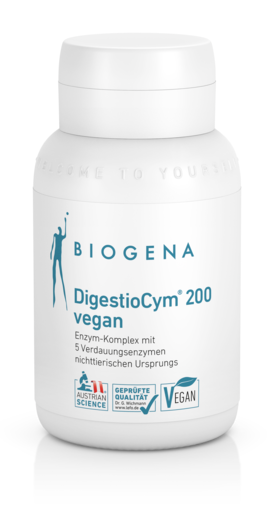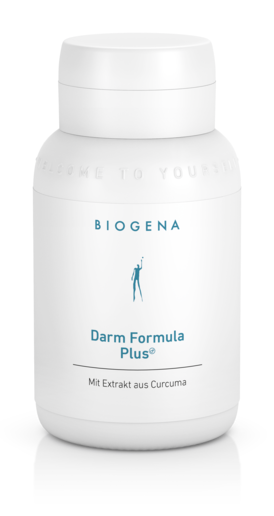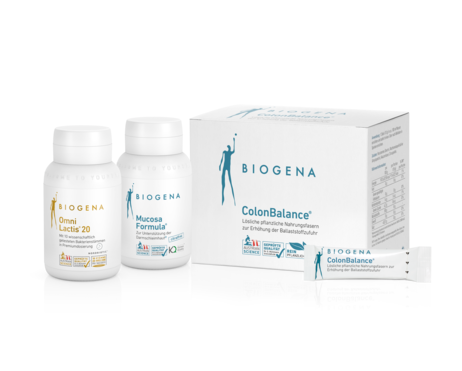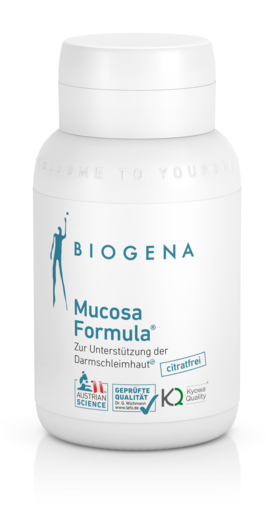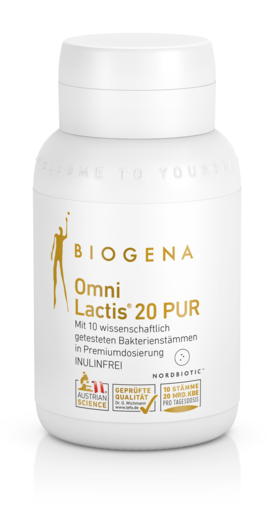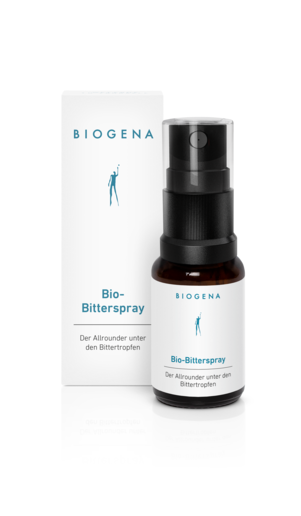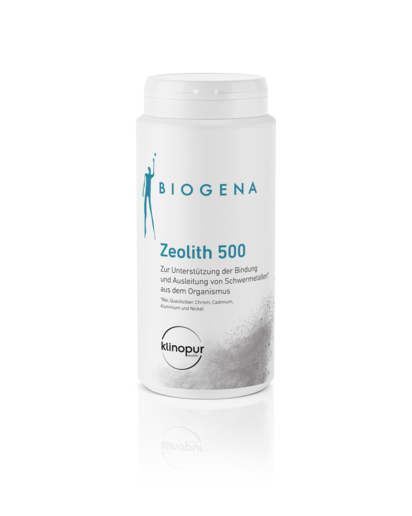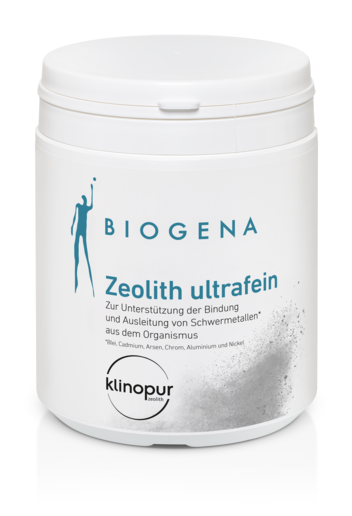Intestines and digestion
Over 7.5 billion people live on our planet and yet we are all unique in our being. In this sense, individual diversity also rules in the gut. Because its flora is unique to each individual. But what makes it so fascinating?


Intestinal Health
Inside the gut of every healthy person, there are around 100 trillion bacteria working around the clock, every day of our lives. Our intestines do far more than regulate food digestion. A good gut feeling is always good to have – let’s reward our intestines with the perfect supply of micronutrients!
In the beginning was the gut – history and function
Function of the small intestine: this is its task in the course of digestion
From an evolutionary perspective, our digestive system is the oldest organ in the body. So fundamentally, we humans developed around our digestion. The main role in the whole digestive process is played by the small intestine. It is here – once the gastric juices have carried out their necessary preliminary work – that so many vital micro and macronutrients from our food are absorbed into our body.
Nature has been extremely clever in potentiating the inner surface of the small intestine in order to achieve the best possible absorption area. It has laid down mucous membranes in millions of millimetre-sized wrinkles, the intestinal villi, whose skin curves to form the microvilli. Thanks to this “folding technique”, the approximately four to six-metre long small intestine achieves the enormous surface area of almost a whole tennis court (approx. 250 m2) – enough space for it to be able to absorb all the vital nutrients for life, which it then transfers to the bloodstream and the lymph tract.
What happens in the large intestine?
The large intestine is home to most of the gut flora (= microbiome). Billions of gut flora busy themselves here with the food's undigested remains and help transform these into the stools. In order to balance out the body’s own fluid metabolism, water is continuously extracted from the remains of the food as it passes through the large intestine and is channelled into the blood. Goblet cells that secrete gel-forming mucins are found in the intestinal mucosa and provide the necessary slippage to help the emerging stool glide through the intestine. Finally, once the stool is effectively free of all nutrients, it is directed towards the exit, the anus. The “end product” that leaves our body is always made up of approx. 75% water, whilst fat, cellulose, tissue particles, and a host of intestinal bacteria (more than half of the dry mass) make up the solid part.
TO SUPPORT THE INTESTINAL MUCOSA
Biogena Mucosa Formula® contains a perfect composition of the amino acid L-glutamine, special plant extracts and relevant micronutrients and can expediently support the needs of the intestinal mucosa.
To support the function of the mucous membranes and cell division, as a nutritional supplement for the immune system and to support the antioxidative protection mechanisms.
In short: How long is the intestine?
To be able to squeeze into our abdominal area, the intestine is a true wonder of folding technology. With a length of between 4 and 6 metremeterssome 250 m2 of surface area (= the size of a tennis court) the intestine clocks up some impressive vital statistics.
The abdominal brain – a smart cookie!
Before nature decided to form a brain as a control center for more complex living beings, the first structure of nerve cells was the digestive system. This was equipped with muscles, mucous membranes, and immune cells. As a further development of this original structure, our current abdominal brain includes approximately 100 to 200 million nerve cells that penetrate the muscle layers of the intestinal wall. In comparison, a dog – a very intelligent animal – has only about 160 million nerve cells in its cerebral cortex. You can see that our stomach is quite clever. For its main task, digestion, it does not need the brain and is immediately in charge once the food has been swallowed. However, these two clever clogs are constantly in touch with each other and both have their respective fingers on the pulse.
Find out more about the relationship between the gut and the brain and how stress affects the intestine and intestinal flora in our blog post "The gut-brain axis".
The fabulous world of intestinal flora...
Our fascinating gut does not stop with the organic structures of the digestive organ but blossoms with little inhabitants, the gut flora (also known as the microbiome) when it is in top form. While only a few bacteria are to be found in the small intestine, the large intestine is carpeted with bacteria and is the most densely populated area in the world. Around 100,000 billion germs with at least 500 to 1000 different varieties form one to two kilograms of gut flora.
These microscopically tiny inhabitants that populate the gut flora have a multitude of different tasks: They digest food remains that have not yet been processed (fibre) and produce substances that supply the uppermost layer of the intestinal mucosa with energy. They form a shield against pathogenic bacteria and prevent them from entering the body. The intestinal flora also interacts with the intestinal immune system. It trains the immune cells and stimulates the formation of defense substances that not only benefit the intestine but also other sites, such as the nasal mucous membranes. All this makes the intestine an important part of the immunological network, which can also be reflected in numbers: The small and large intestines house 70% of the immune cells and almost 80% of all the immune reactions.
Given their importance, we should seriously take on board the fact that the majority of our gut bacteria are in danger. While indigenous populations, such as those in the Amazon rainforest, have a multitude of different gut bacteria, people in developed countries have lost up to 40% of the diversity in their gut flora due to their lifestyles and diet. Therefore, it is worth paying some real attention to your gut and its tiny inhabitants.
Omni Lactis® 20 Gold
There's a lot going on in our intestines: The intestinal flora, also called microbiome, colonizes it. While there are only a few bacteria in the small intestine, the large intestine is covered with a dense bacterial lawn. BIOGENA Omni Lactis® 20 Gold is a leading multi-strain preparation in the segment of lactic acid bacteria quality products.
If your gut’s happy, your body’s happy: what can we do specifically to make the gut and its fellow residents feel comfortable?
In the beginning was the gut – not only from an evolutionary perspective, but also because this dictates both our well-being and our health. The gut particularly welcomes the following:
Gut-friendly food and the right nutrients
Movement
Gut-friendly food and nutrients
A gut-friendly diet is plant-based, native, diverse, unprocessed and biological.
Exercise keeps the intestines fit
If you exercise regularly, your intestines will also keep fit. They are better supplied with blood and food is transported more quickly. This is important, because if food takes too long to travel through the intestine, harmful substances can also stay longer. Regular exercise (at least 30 minutes a day) pushes the intestine to peak performance. At high sports intensity, the sympathetic nervous system is activated, which is responsible for increasing blood pressure and heart rate and also inhibits digestion. In moderate sports, the parasympathetic nervous system is activated, thereby improving the blood flow to the intestine and the intestinal motor function.
Various studies prove the positive effects of sporting activity on our intestinal flora. On the one hand, the variety of microorganisms in the intestines increases, and on the other hand, the range of microbial metabolic products, such as butyrate, also increases. Normal weight and regular exercise are therefore important prerequisites for a healthy bowel and intestines.
Would you like to find out more? In the next post you can find out what active gut care looks like with tips and a comprehensive introduction to gut maintenance:



